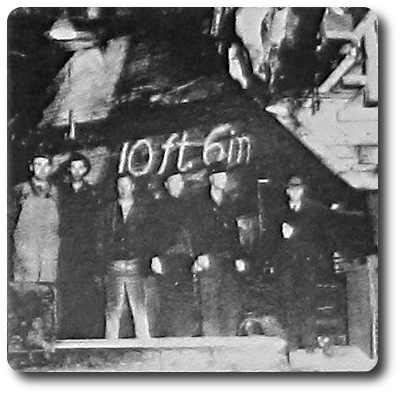 |
|
The resort style depot in Snoqualmie shortly after construction, circa 1890.
Courtesy Snoqualmie Valley Historical Museum |
The town of Snoqualmie was platted and built on the route of the Seattle, Lake Shore and Eastern Railway (SLS & E). The railroad started on Seattle's waterfront and wound around Lake Washington and Lake Sammamish (now the route of the Burke-Gilman Trail) on its way to the planned crossing of Snoqualmie Pass.
The railroad never reached the pass. It was bought by Northern Pacific, which later became the Burlington Northern. It operated as a branch line until the 1970s, carrying passengers, supplies for local businesses, millions of board feet of logs to local mills and finished lumber to world markets.
The tracks just a few feet away from this pavilion follow the original route of the SLS & E.
 |
|
The resort style depot in Snoqualmie shortly after construction, circa 1890.
Courtesy Snoqualmie Valley Historical Museum |
When the Snoqualmie Falls Lumber Company (now Weyerhaeuser) began its operation about a mile north of here, the mill was set up to handle the huge Douglas-fir, sitka spruce, western hemlock and western red cedar trees which covered the hills and mountains of the region. The wheeled carriage under this log is similar to the one used in the original mill. It was used to carry 10 to 15 foot diameter logs through a huge bandsaw, cutting timbers up to three feet square for trestle bridges and warehouse floors.
 |
|
Downtown Snoqualmie from the depot roof, circa 1911.
Courtesy Snoqualmie Valley Historical Museum |
With the increased diversification of engineered wood products (like plywood, laminated beams and chipboard) and increased reliance on smaller trees, the Snoqualmie Falls Lumber Company Mill #1 became outdated and was dismantled.
 |
|
Bandsaw head rig cutting a log, Snoqualmie Falls Lumber Company circa 1944.
Courtesy Snoqualmie Valley Historical Museum |
Some of the structural timbers from the Mill #1 building were used to construct this pavilion as a state centennial project for the City of Snoqualmie. One of the wheels of the Mill #1 bandsaw is on exhibit two blocks east, near the Snoqualmie Depot. Today, Weyerhaeuser is still operating in this area and producing a higher volume of wood products using smaller logs and equipment.
 |
|
Log train at the Snoqualmie Depot, 1908
Courtesy Snoqualmie Valley Historical Museum |